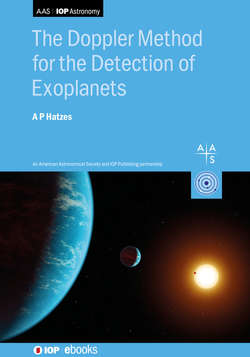Читать книгу The Doppler Method for the Detection of Exoplanets - Professor Artie Hatzes - Страница 19
На сайте Литреса книга снята с продажи.
2.1.1 Gratings
ОглавлениеThe key part of any spectrograph is a dispersing element that breaks the light up into its component wavelengths. For high-resolution astronomical spectrographs, this is almost always a reflecting grating, a schematic that is shown Figure 2.2. The grating is ruled with a groove spacing, σ. Each groove, or facet, has a tilt at the so-called blaze angle, ϕ, with respect to the grating normal. This blaze angle diffracts most of the light into higher orders, m, rather than the m = 0 order, which is white light with no wavelength information.
Figure 2.2. Schematic of an echelle grating. Each groove facet has a width σ and is blazed at an angle θB with respect to the grating normal (dashed line). Light strikes the grating at an angle α and is diffracted at an angle β, both measured with respect to the grating normal.
Light hitting the grating at an angle α is diffracted at an angle βb. and satisfies the grating equation:
mλσ=sinα+sinβ.(2.1)
Note that at a given λ, the right-hand side of Equation (2.1) is ∝m/σ. This means that the grating equation has the same solution for small m and small σ (finely grooved), or alternatively, for large m and large σ (coarsely grooved).
One can compute the angular dispersion dλ/dβ by taking the derivative of the grating equation:
dβdλ=mσcosβ.(2.2)
Thus, a higher dispersion can be achieved by using higher spectral orders.
The grating equation (Equation (2.1)) can be used to eliminate the spectral order number and obtain
dβdλ=sinα+sinβλcosβ.(2.3)
If we chose the blaze angle, θB such that α=β=θB, we get
dβdλ=2λtanθB.(2.4)
In other words, large angular dispersions require large blaze angles. The blaze angles of echelle gratings are typically 63.4° or 75.9°. These are often called “R2 grating” or “R4 grating,” due to the fact that the tangent of 63.4° or 75.9° is 2 and 4, respectively. Because of the tangent, the angular dispersion is a steeply increasing function of the blaze angle. Note that the angular dispersion of an R4 grating is a factor of two larger than that of an R4. Increasing the blaze angle by just another 7° would result in another factor of two increase in the dispersive power.
Now let us consider the case of a constant diffraction angle, β=βc. The right side of Equation (2.1) is now a constant, and the associated central wavelength of an order, λc, is inversely proportional to the order number m:
λc(m)=σm(sinα+sinβc).(2.5)
If we differentiate with respect to m, we get the change in central wavelength with respect to m, dλ/dm∼1/m2. Thus, the distances between the central wavelengths of spectral orders will decrease as 1/m2. This means at high orders, the wavelength intervals will overlap (Figure 2.3).
Figure 2.3. Schematic of the wavelength intervals in different orders from an echelle grating. For higher orders, the central wavelength of the order λm has approximately the same dispersion angle.
Most modern, high-resolution echelle gratings operate at high spectral orders of m ∼ 100, such that these occur spatially at the same location (same β) as the detector. To eliminate the undesired light from the other orders, one has to resort to blocking filters to isolate the light from the desired wavelength range. But why waste light? The elegant solution is to use an additional optical element to disperse the light perpendicular to the grating dispersion (i.e., the so-called “cross-disperser”). The use of two-dimensional detectors such as charge-coupled devices (CCDs) means that the separated spectral orders can now all be recorded at the same time.
The advent of echelle spectrographs, which provide a large wavelength coverage and high quantum efficiency of two-dimensional digital detectors (as opposed to photographic plates), was the main driver for the dramatic increase in RV precision in the past couple of decades. Figure 2.4 shows a spectrum of sunlight taken with an echelle spectrograph, and it nicely shows the large wavelength coverage one can achieve with an echelle spectrograph.
Figure 2.4. A spectrum of sunlight taken with a prism cross-dispersed echelle spectrograph.
